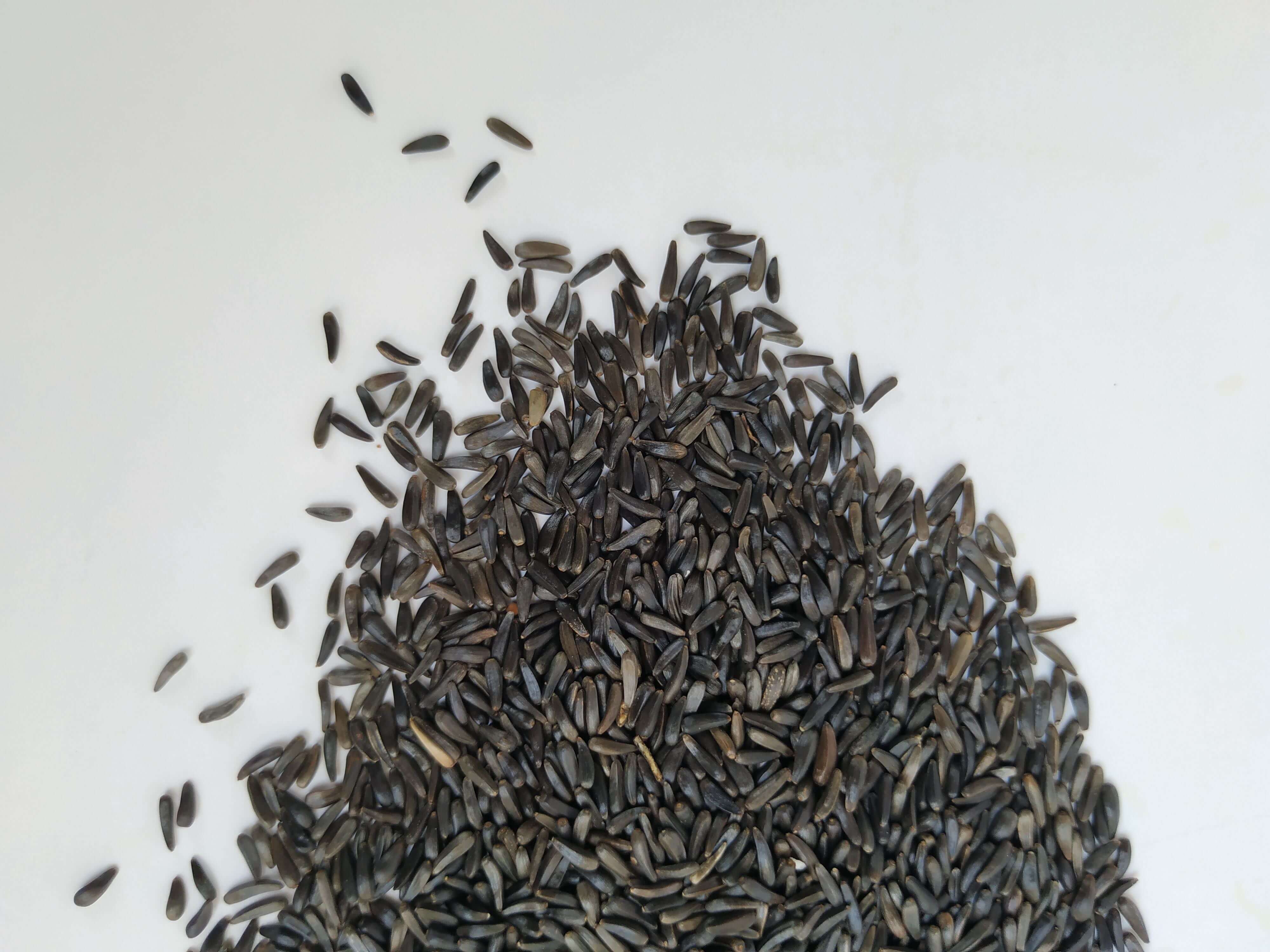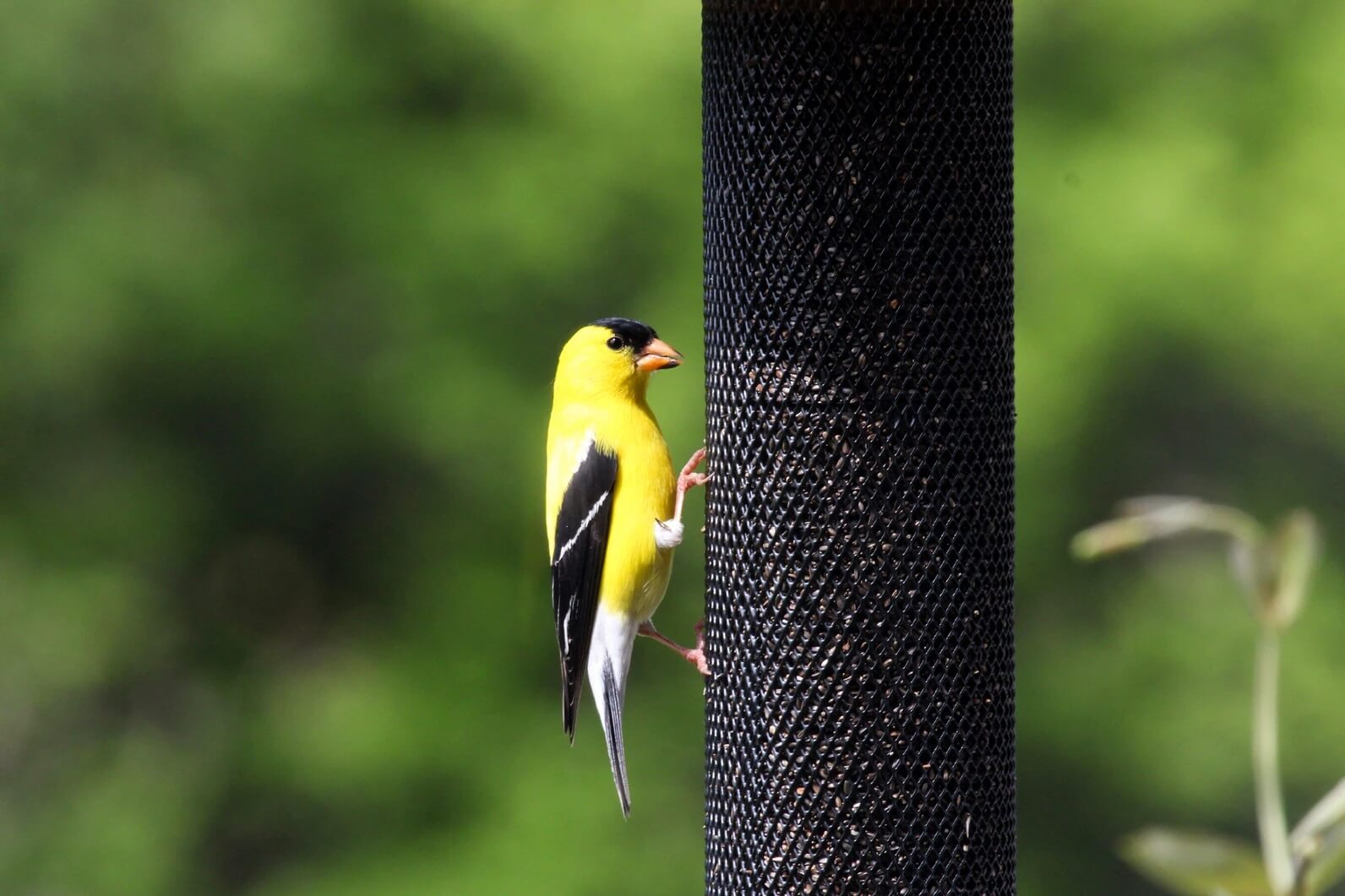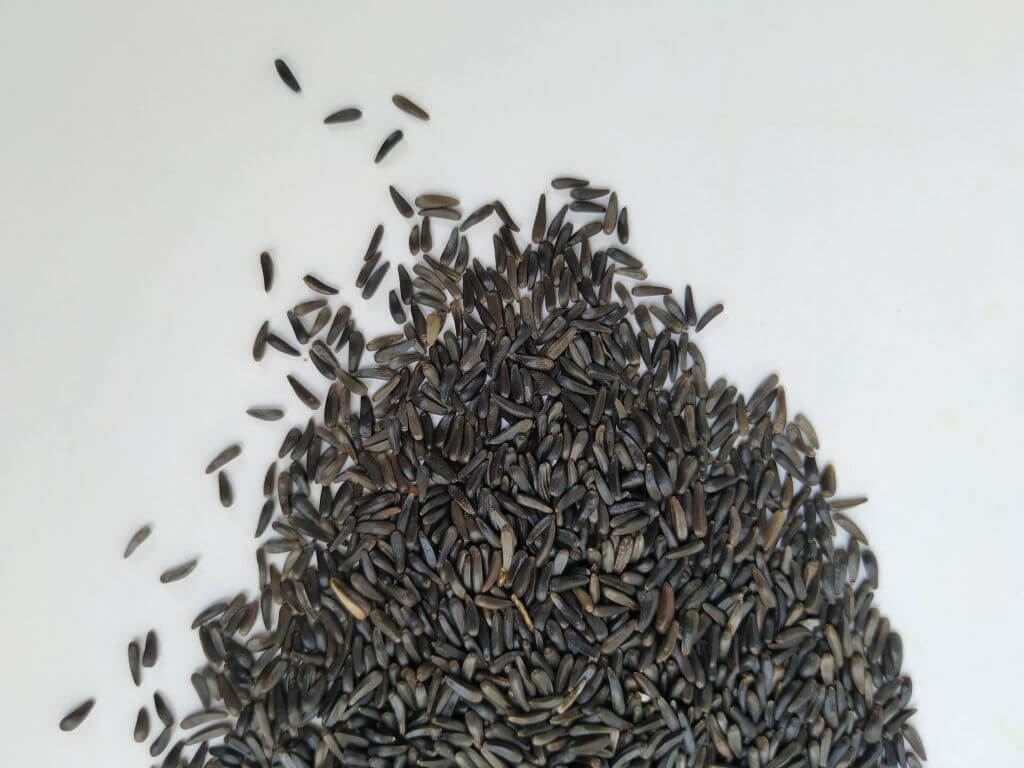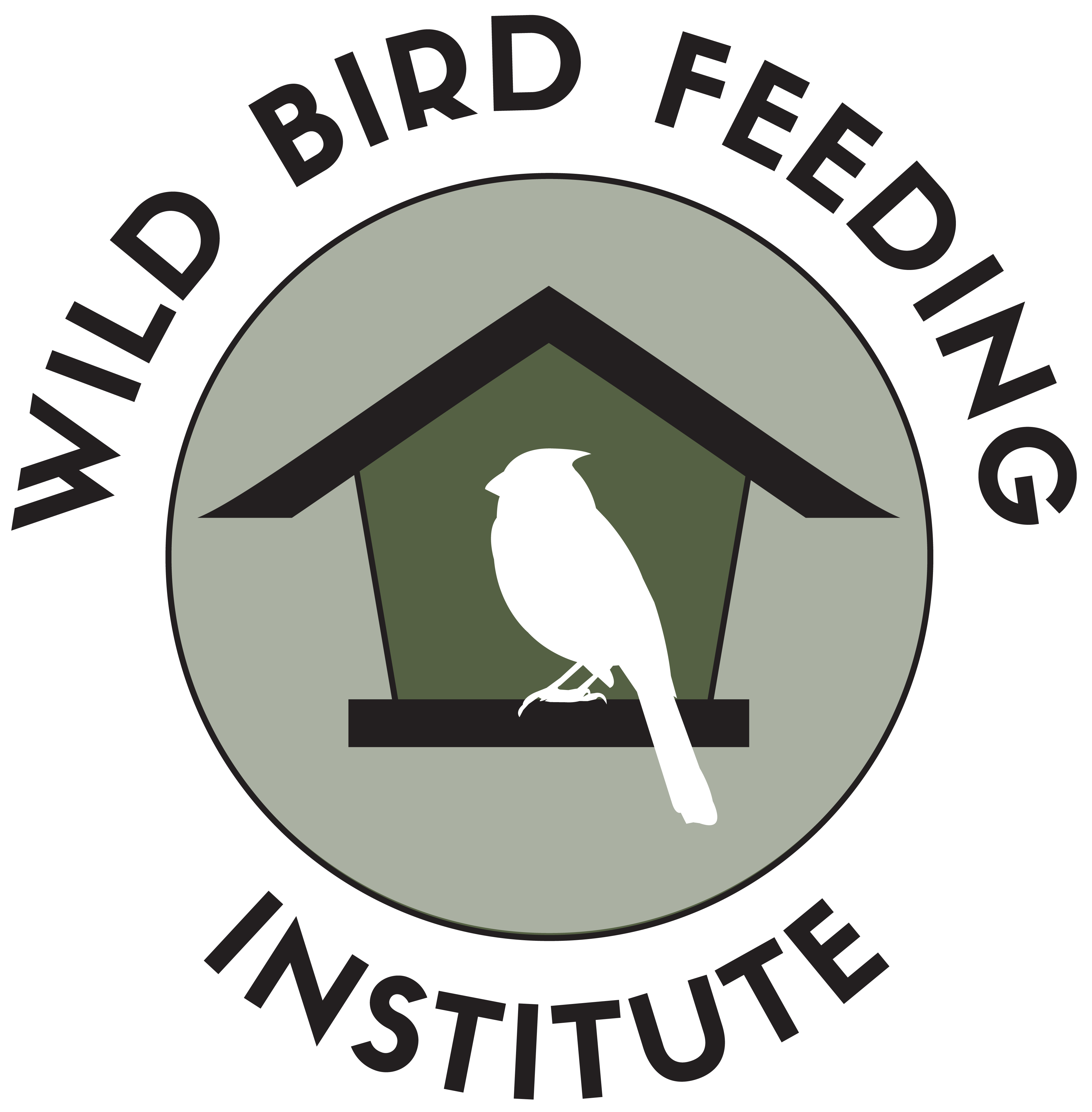Nyjer® Seed FAQ
What is Nyjer®?
Niger “Guizotia abyssinica” is a tiny black or brown imported birdseed. It is the only major wild bird-feeding ingredient that is imported into North America from overseas.
The genus “Guizotia” consists of six species, of which five, including niger, are native to the Ethiopian highlands. The seed contains roughly 40 % oil. In 1905, the Vienna Botanical Congress conserved the name “Guizotia.”
In 1930, the Cambridge Botanical Congress proposed the name “Guizotia abyssinica” as the correct name. It has been so-called since 1954 when the Botanical International Congress listed it in a book identifying all known seeds on earth. The official international common name is niger but has been commonly referred to as the trademarked name “Nyjer®” by the WBFI since the late 90s.


What is the Best Type of Feeder for Nyjer® Seed?
Wire mesh feeders and fabric (sock) feeders are great feeder options to hold the tiny black Nyjer seed.
Tube feeders with tiny port holes under the perch for goldfinches to eat upside down also work as Nyjer feeders.

Where is Nyjer® Seed Grown?
The Nyjer® birdseed you see in the stores in North America is primarily grown in India and Ethiopia, but it is also present in Burma, Myanmar, and Nepal. Abroad, the oil is used for culinary purposes, anointing the body, manufacturing paints and soft soaps and for lighting and lubrication.
Where did the name Nyjer® come from?
In the mid-1990s, ETO Sterilization based in Linden, NJ started a contest with the Niger seed importers “Can you rename this tiny, imported seed”. "Nyjer" was a response and that spelling stuck.
Registration of the trademark term Nyjer® was granted to the WBFI in December 1999.
WBFI assumed the leadership in moving the industry to this term in response to the mispronunciation of "Niger" and sensitivity to the consumer who mistakes the seed for growing "thistle in their yard. WBFI believes the trademark helps the industry and clarifies a misconception of the consumer that “Guizotia abyssinica” is related to the noxious weed thistle.
Why is Nyjer® a Popular Bird Seed?
Wild birds flock to feeders that have this seed because of its high oil content. This makes it a great source of energy for birds, which is crucial to keep up their strength when flying long distances or when living in colder climates.
In North America, it the favorite food of the finches, including the beautiful goldfinch. It is also a fan favorite of sparrows, redpolls, doves, towhees, quail and buntings.
What are the different types of Nyjer®?
Two different types of Nyjer seed are sold in the U.S. and are sourced from either Ethiopia or India. Generally, Nyjer seed from India is black, and Nyjer seed from Ethiopia is brown. It has been a long-held misconception that the black seed would be more preferred by birds, but WBFI Research Foundation is currently finding through bird consumption studies that the brown seed than the black Nyjer® seed, by up to double or triple the amount.
Although more research is being conducted as to why, it is believed that storage and/or sterilization methods may impact rancidity levels which causes a high variation. WBFI members can view the study in the info hub HERE.
Why is Nyjer® sometimes referred to as “Thistle Seed”?
The term thistle was used as an alternative, and wild birds can sometimes be seen on thistle, that is a weed, that grows in the wild and in some areas on the side of the road. The Nyjer seed is not derived from any native or non-native thistle plant. Thistle weed and Nyjer have no relation and is more closely related to the same family of sunflowers.
It is frowned upon to use the term "Thistle" in the industry due to the confusion it may cause. Businesses that wish to use the trademarked term "Nyjer" must become a member of WBFI or pay an annual licensing fee.
How is Nyjer® Treated?
Imported Nyjer is controlled by the USDA and the treatment schedule is T412-a Heat Treatment at 248°F (120°C) for fifteen minutes. Currently, there are only four facilities based in the United States and India licensed to conduct heat sterilization.
Could Nyjer® cause plants to grow in my yard?
The of heat treatment is to devitalize noxious or quarantine significant weed seeds and it is unlikely after treatment at such a high temperature. If a Nyjer plant does manage to sprout underneath your Nyjer feeder, the result would be a stunted plant that could not produce its own seeds, because the plants are sterile unless pollinated by bees and would not result in any unwanted plant problems.
Who can use the Nyjer® trademarked?

Nyjer® has been a registered trademark of the Wild Bird Feeding Institute since 1999. As of January 1, 2023, WBFI has moved from an open-licensing system to allowing members of WBFI to use the trademark and non-members to apply for an annual fee.
Selling mixes or products that include Nyjer®?
See below for those licensed to use the trademark and to apply.
